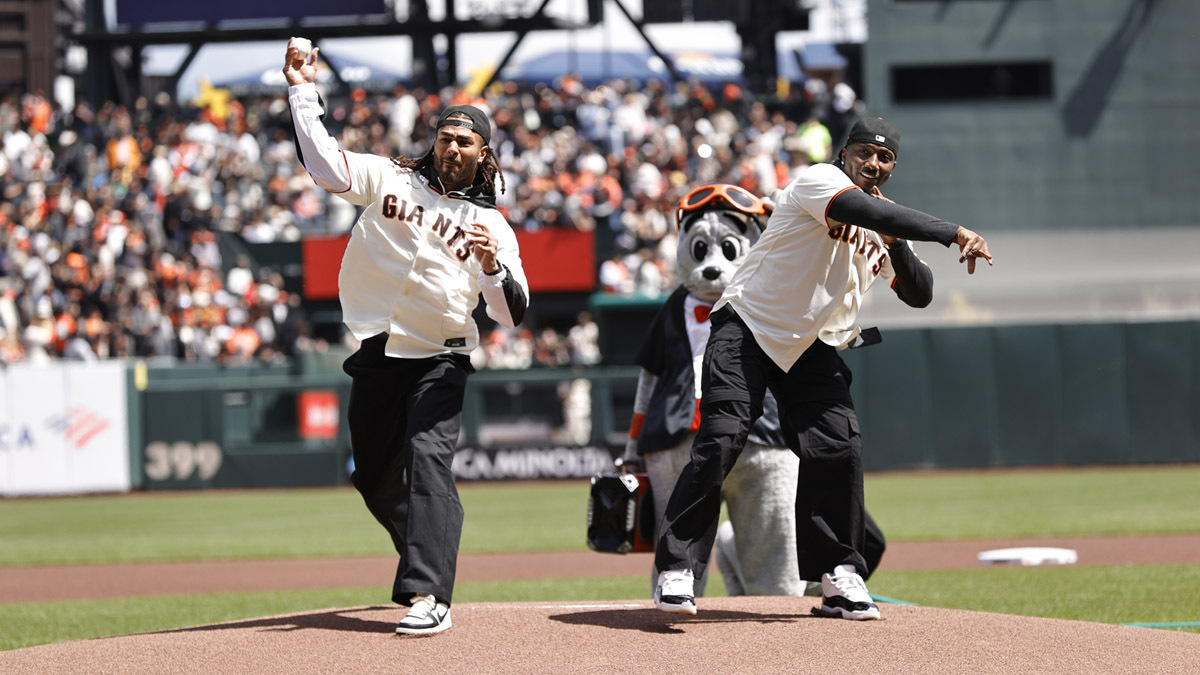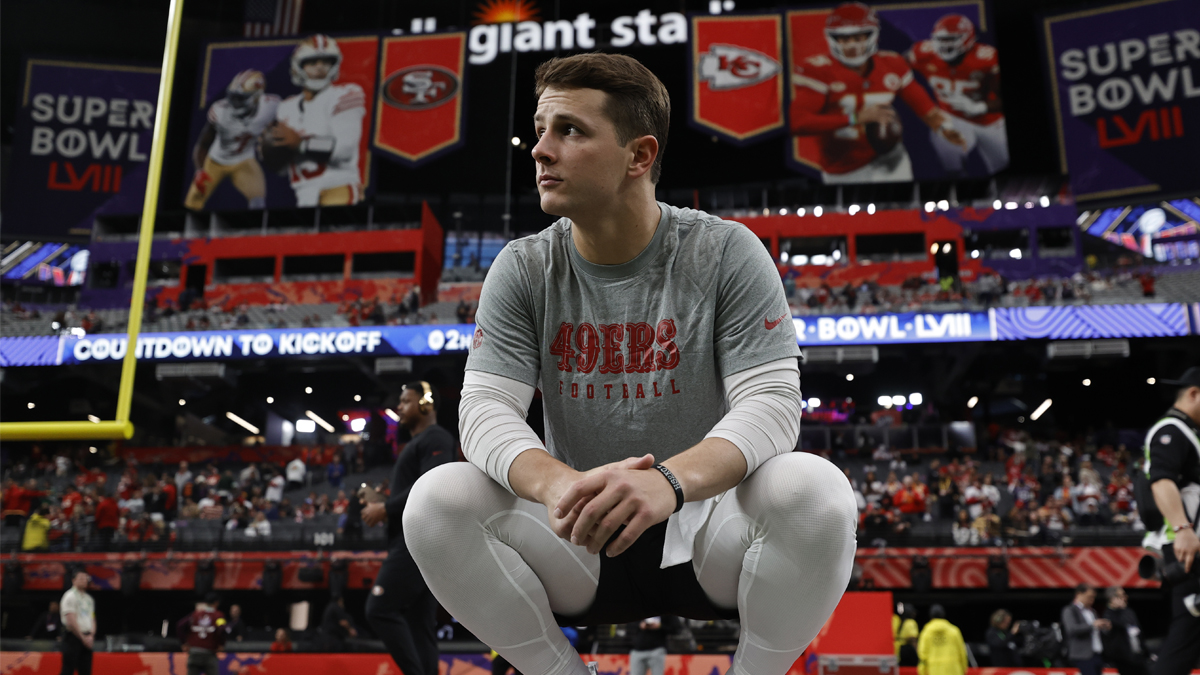The Raiders are by far the most interesting team heading into the 2019 NFL Draft.
Having general manager Mike Mayock come out of your television and into the Raiders war room is fascinating. So is head coach/final decision maker Jon Gruden, a wild card even at his most predictable.
They could only star so much with standard issue picks, but the Raiders don’t have one pick each round. They have three in the first, and another extremely high in the second.
Stay in the game with the latest updates on your beloved Bay Area and California sports teams! Sign up here for our All Access Daily newsletter.
The volume offers great opportunity to reshape the roster and find foundation pieces for the Gruden era. It carries another benefit once this draft begins Thursday night.
Flexibility.
“That’s what I love about it,” Mayock said. “Obviously, we could move up and you’ve got to know what you are trying to do and how you are trying to do it. You can try to increase your draft capital by moving down or you stay the same, and four of the first 35 picks gives you an opportunity to consider all those scenarios multiple times.”
As Mayock has said time and again since leaving NFL Network to take this post: the Raiders are open for business. We know Gruden’s down, something made clear by the six trades made during last year’s draft.
NFL
“That’s why we are opening up the lines of communication with all the teams around the league,” Mayock said. “I keep telling our guys, and you guys have heard me say this before, we need to be nimble, and nimble means depending on what the situation is to be able to react quickly according to the situation and make the right decision.”
The Raiders have four high picks and then don’t have another one for 70 picks. Mayock said recently he would love to get into the second and third rounds – they traded their third and fifth round picks for Antonio Brown – because, as he put it, that’s a good place to go fishing.
The best way to get said picks, is by trading down from Nos. 4, 24, 27 or, to a smaller extent, No. 35. That will happen during the draft, and roughly follow draft trade charts used by most everyone for quick reference while making a deal with sand quickly leaving the hourglass.
“They’re all within points of being the same thing,” Mayock said. “If you’re on the clock and you have two minutes left and somebody is calling about a trade, unless it’s for an existing NFL player, you have to have a way to see what the benchmark is quickly. I think all teams are using these trade charts that are very, very similar. Now, you have to use your gut a little bit, and there are different times where you might want to get more, and there are other times where you might take less, but that’s kind of the benchmark to start with.”
Former Dallas Cowboys head coach Jimmy Johnson created a trade chart that was widely used for years, but it has been updated as some draft and trade rules have changed. They operate on the principle of finding an appropriately equitable trade between clubs using a sliding scale of point values.
And, if you look at last year’s first-round trade between Oakland and Arizona – the Raiders gave No. 10 to Arizona for Nos. 15, 79 and 152, the points match up almost perfectly on the Johnson chart and another modernized one here. Most of the other Raiders trades line up well on the Johnson chart, but as long as a relatively standardized version is used, teams can arrive quality at equitable trades that, again, can very based upon need for player or how high up the first round it goes.
That’s why No. 4 could carry some real weight if the Raiders move out of it, even in a small trade down. That’s certainly possible, especially if certain prospects are gone.
The Raiders are known to love Ohio State edge rusher Nick Bosa and would happily take him at No. 4, but he should be gone by No. 2. Trading up to get him is unrealistic given the cost and San Francisco’s perceived unwillingness to let him go. Going above the 49ers to take Bosa or that quarterback from Oklahoma is extremely cost prohibitive and seemingly detrimental to a team with so many needs.
Alabama defensive tackle Quinnen Williams seems like another automatic if he makes it to No. 4, unless there’s an insane offer Gruden can’t refuse.
If those two are gone – Kyler Murray simply can’t be ruled out if he falls to No. 4 – the Raiders could welcome a move out of the fourth pick. He could also be worth a king’s ransom in trade.
If a team wanted to go up and get a quarterback before the Giants at No. 6 – the most likely scenario -- or had a hankering for Kentucky edge rusher Josh Allen, for example, the Raiders could slide on down and pick up some extra picks.
Let’s use a few teams as examples. (As a note, we’re excluding picks from future drafts or NFL players. Also, we’ll use the Johnson chart as a reference because it has been made public). If the Dolphins wanted to jump up and take a quarterback, they would have to compensate the Raiders for the No. 4 pick worth 1,800 points. That would cost Nos. 13, 48 and 78 to make the deal. That’s super rich for one draft, but you get the point.
Getting No. 4 would cost Buffalo Nos. 9 and 40.
The Raiders might be comfortable picking up an extra pick while still reeling in a edge-rushing scheme fit and athletic freak like Rashan Gary or Houston’s Ed Oliver in the top 10 – though they could be gone early, too –or Clemson’s Clelin Ferrell near the middle of the round while picking up extra selections.
“It depends if you're on the clock and you are sitting there at No. 4 and someone offers you to move back to whatever,” Gruden said. “What are they giving you?”
[RELATED: What Mayock's past rankings can tell us about Raiders]
The price for No. 24 and No. 27 are more reasonable to trade down from and jump back into Day 2 beyond No. 35. They also provide weapons to trade up in the first round to land someone they really want that remains available.
“We are wide open to moving up, we are wide open to moving back,” Gruden said. “We are wide open to just sitting there and taking a guy that falls to us.”


